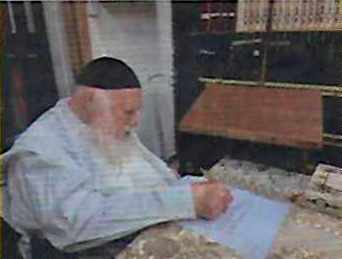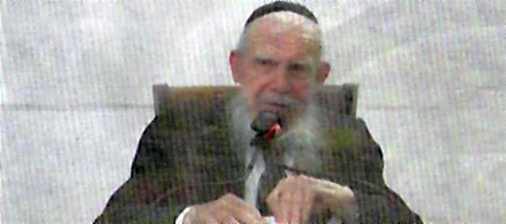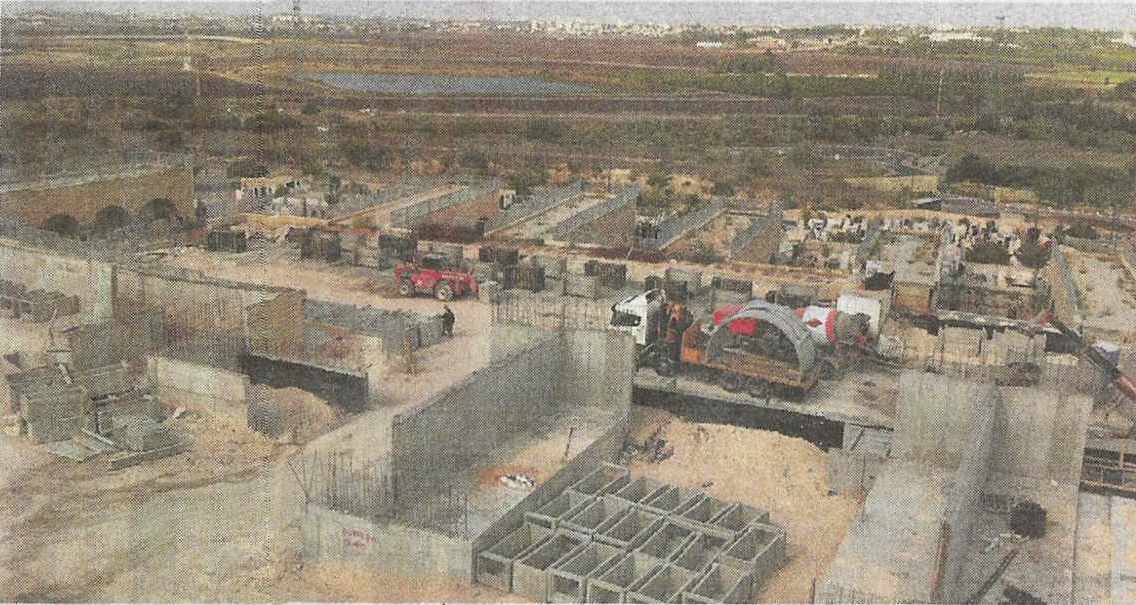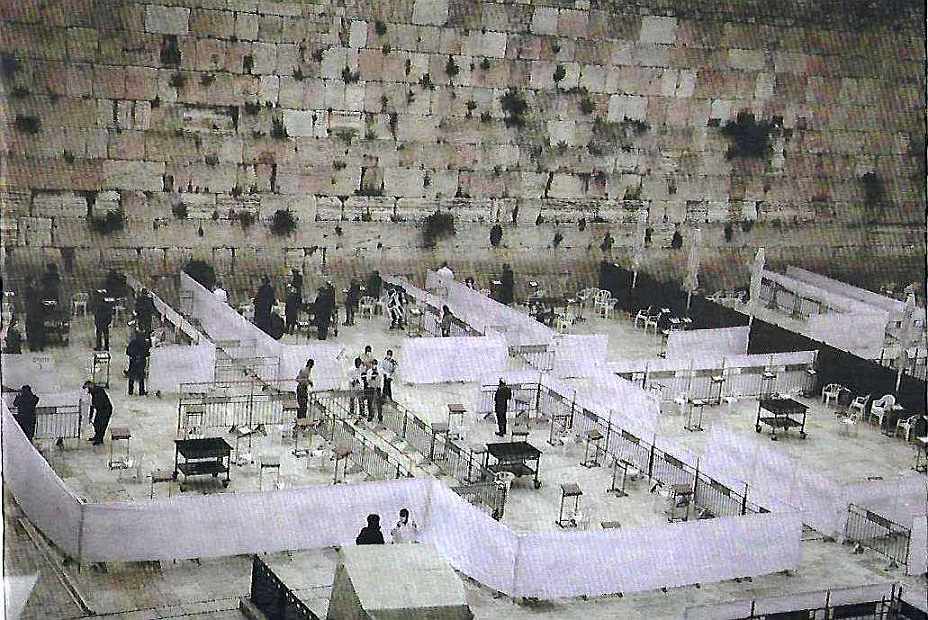  |
|
| ||||||||
This Google Custom Search looks only in this website. Answers and Guidance from HaRav Chaim Kanievsky shlita on Current Issues - Part II
"Studying Torah" is the key to ward off the Corona virus; this was the message stressed by HaRav Chaim Kanievsky as the answer to topical questions addressed to him, as guidelines for roshei yeshivos, rabbonim, educators, parents and talmidim.
*
Question: How can we encourage and reassure someone who has been forced into isolation several times already?
Answer: He should involve himself in Torah study.
The following presents special guidance offered by HaRav Edelstein from his home to the students of Shiur Gimmel who are being tested these days for acceptance into yeshivos gedolos, and to their parents as well. His incisive message stated that over the years, he has learned that those students who exert pressure to be accepted to yeshivos which refused to do so to begin with, and finally were admitted — did not do so well at all.
The trend for many years in Eretz Yisroel has been to bury people in manmade structures, above ground and now even below ground. Cemeteries in Israel are beginning to resemble residential neighborhoods with high rising concrete structures of many floors. The bodies are placed in on concrete cells, sometimes with a little bit of earth sprinkled inside. In some places the bodies are surrounded in a container polystyrene foam (known in Hebrew as kalkar).
As will be clarified: According to leading poskim, this arrangement does not constitute burial, which needs to be in the ground. Therefore, those who are buried this way are not buried in Eretz Yisroel!
The Kosel as it looks now
From Our Archives
Our Torah, Our Prayers And Our Tears: Our Tears
by HaRav Chaim Pinchos Scheinberg zt"l
Part III
"By the rivers of Bovel; there we sat, we also cried, when we remembered Tzion." The Yalkut Shimoni (Tehillim 137) explains that Klal Yisroel was crying over the departure of their prophet Yirmiyohu. Yirmiyohu escorted his newly captive nation to the farthest point and then, when our exile from Eretz Yisroel was inevitably about to begin, he left us to return to Yerushalayim.
His departing words, in response to our tears were, "May the heaven and the earth bear witness to me, that had you wept one tear while you were still in Tzion, you would not have been exiled." The time to cry was while we were still in our homes in Yerushalayim. All the tears that were shed at the threshold of our golus could not do what a single teardrop could have accomplished if only it had been shed in Yerushalayim. After the Churban, it was too late for our tears. Why?
Mourning on Tisha B'Av is the Only Solution
by Mordecai Plaut
This is another year we have to mourn the destruction. With all the truly wonderful things that we have experienced in recent generations, with the vast increase in wealth and the tremendous growth of Torah, still the overall situation of Jews throughout the world is bleak enough today that there certainly is no one who questions the need to mourn -- as some did in the early exuberance after the founding of the State of Israel more than 50 years ago.
Despite all our present problems, there is no doubt that our greatest political and social problem is the Churban, the destruction of the Beis Hamikdash and with it the proper order of national and personal life in service to Hashem. Without the reconstruction of the Beis Hamikdash -- and all that it implies -- life is not as it should be, and it can never really be as it should be without the Beis Hamikdash, and the service there of the Cohanim and the direction of the nevi'im and the Sanhedrin. That does not mean that there cannot be interim improvements, but it does mean that we should never lose sight of our long-term goal, and especially on Tisha B'Av, which is explicitly dedicated to this.
All Rights Reserved
by R. Chadshai
Fiction
The Green and the Schneider families live opposite each other, on the middle floor of a three-story apartment building. Their apartments are identical in size and layout, differing only in their exposures, of course.
Yoel Schneider is an avreich who studies in kollel full-time, while Yehoshua Green, whose accent betrays his British origin, studies with Yoel half a day in kollel, and works in a sifrei kodesh store between five to eight in the evening.
Whoever might think that the closeness of their apartments makes the two young men resemble each other in character and outlook, is wrong. Their personalities are as diametrical as east is from west, and each one of them determines his household policies accordingly (or at least they did until unusual circumstances caused one of them to make a drastic change in his life).
At the outset of our story, the Green household was run by strict and clear rules. The members of the family knew in advance what Mrs. Green would prepare every day for lunch. On Shabbosim and yomim tovim, the menu was set and routine.
The Wealth that Lies in Poverty
by R' Zvi Zobin
"Abba! Can I have a bike?"
"I'm sorry, Chaim, I cannot afford one now."
"But all my friends have one. Why can't I have one?"
"I told you, Chaim. I just don't have any money now."
"But, Abba, I know a store which sells second-hand bikes for only a hundred shekels."
"Chaim! I do not even have ten shekels now!"
Kristallnacht
Written with Yonina Hall
A personal memoir of Zippora Hess, born in Berlin, escaped Nazi Germany at eighteen to Washington Heights, Rochester and Boston before making aliya in 1984. We revisit Kristallnacht through the eyes of this granddaughter of the longtime shammos of the Breuer shul in Frankfurt.
"I'm not going to stay here! I've got a family!" Mutti cried, as the crowd outside hooted and jeered. "You must come with me! I cannot stay here and you have to come with me!"
For a long time, my elderly grandmother refused to listen to my mother's pleas to leave her small apartment. This is how old people are -- in times of emergency they cling to their familiar possessions. No matter that her 76-year-old husband, my grandfather, had been rudely awakened that morning and dragged across the street by the Gestapo to watch his beloved synagogue set aflame. The heat of the soon-to-be- inferno had not yet reached their apartment on the top floor of the imposing, revered shul, but my mother knew that she must remove her mother to safety.
"You have to come with me!" Mutti pleaded and insisted, pulling her frail mother by the arm. Finally, after many entreaties, the older woman consented. She dutifully followed her daughter down the back stairs and out the door towards her other daughter's apartment in Frankfurt. Had Mutti not happened to be visiting her parents for two weeks, who knows what would have happened to my grandmother?
|
||||||||



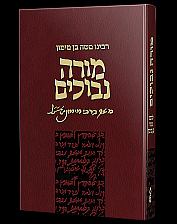
.jpg)
